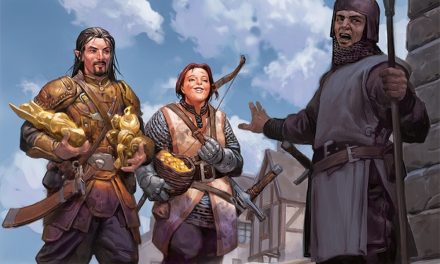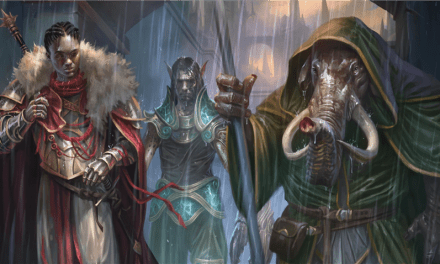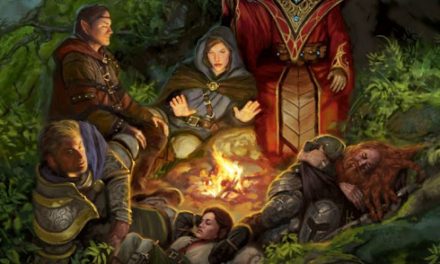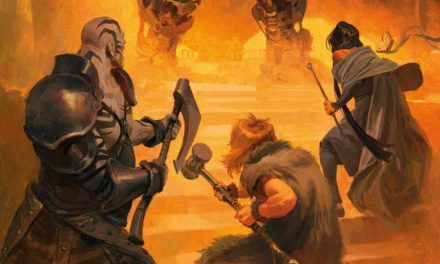When you’re a Dungeon Master, part of your job is to make sure that combat stays engaging for your players.
But that can be difficult as the party naturally starts to settle into certain strategies and routines. If you’re not careful, it can eventually start to feel like a mindless slog of die rolls instead of a thrilling and adrenaline-pumping experience.
After all, combat is a core element of Dungeons & Dragons and the whole game can suffer if it gets stale.
So how can you keep things interesting and fresh?
These are some of my favorite tips for keeping combat engaging that I’m sure will help you too!
Introduce New Elements
Possibly the greatest way to keep combat interesting is to introduce new elements that the players haven’t encountered before.
In fact, this tip is so important that nearly every one of the other tips could be considered an extension of it!
As we quickly approach a decade of D&D 5e, there are certain elements to the game that have become somewhat expected over time.
Especially if your group has been playing for quite some time, you want to pay extra attention to elements of the game that your group hasn’t used or maybe only encountered once or twice.
This could be a new type of enemy, a new or underused mechanic, a new terrain feature, or something else entirely.
By keeping things unpredictable, you’ll keep the players on their toes and engaged in what’s happening.
It’s always fun to see that spark in the players’ eyes when they have something new to engage with. Even (or especially) if it’s making the combat more difficult, there’s excitement in having a new challenge to overcome!
You Might Like: Using the Red Thread To Create Cohesive D&D Campaigns
Enemy Variety and Tactics
Another way to keep combat interesting is to change up the types of enemies that the players are facing.
Instead of always fighting the “standard fare” of bandits, cultists, orcs, and goblins, why not shake things up? Throw in some elementals, demons, or other exotic/underused creatures!
Part of what makes enemies like Bodaks or (a personal favorite) Manticores so terrifying is how underused they tend to be.
These are entirely new enemies with their own temperaments, features, and tactics for the party to figure out!
But this tip doesn’t just apply to the types of enemies you throw at the party. It also applies to how they actually fight.
A party that is used to enemies primarily being melee combatants will need to rethink their approach when you start mixing in ranged attacks and spellcasters!
Don’t be afraid to get creative with your enemy encounters.
After all, why should the party be the only ones who have tactics in combat? Things get more dramatic and intense when you have enemies playing to their own strengths as well.
While the party is raiding an enemy encampment and tangling with melee enemies, why not have archers up in towers raining arrows down on the party? Perhaps the encampment’s commander is under the effect of a Greater Invisibility spell being cast by their spellcasting ally?
If you want to really spice things up, try using a mix of different creatures that work together in interesting ways.
For example, the party might be feeling bold enough to try to take out the group of Hags that have been making things difficult for them. However, they might not have accounted for the two Oni that serve as the Hags’ protectors/enforcers.
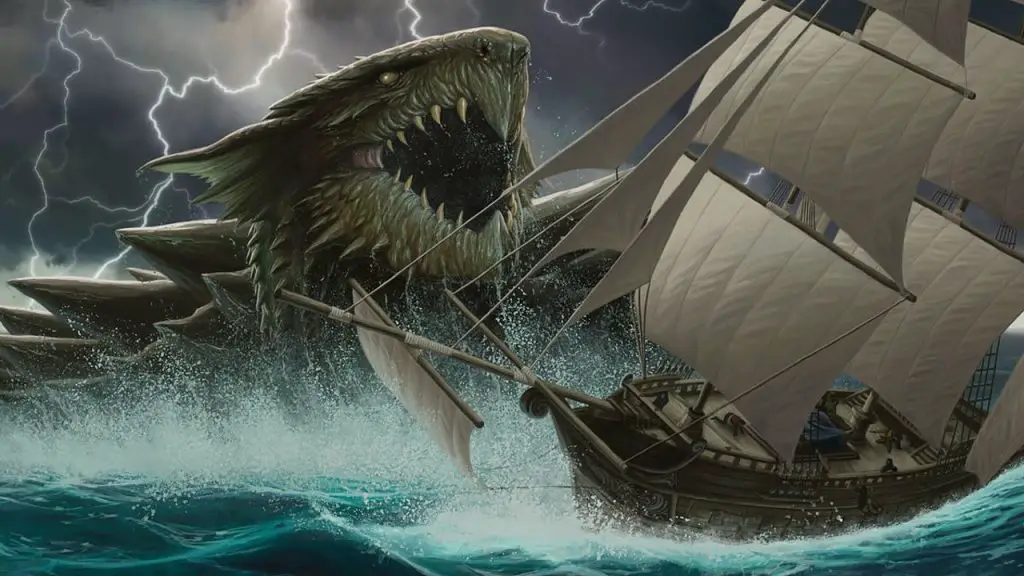
Make Use of The Environment
One of my favorite ways to keep combat interesting is to make use of the environment itself. This could be something as simple as introducing a new terrain feature or using existing features in creative ways.
For example, if the party is fighting on a ship, some enemies might try to push party members off the edge and into the shark-infested waters below.
Maybe the party encounters enemies high up in the snowy mountains. Who is to say that the force and noise of a spell like Fireball or Shatter couldn’t potentially cause an avalanche?
Rolling percentile die to determine if that happens or not (without telling the caster why they’re rolling) can add some extra tension. It’s possible that one of the enemies might even call out to the party’s caster “are you crazy?!” or something like that.
The possibilities are endless and making the environment feel real adds so much extra depth to the encounter!
Of course, this also ties in with the point I made in the last section regarding tactics.
If given the opportunity, why wouldn’t enemies use the terrain to their advantage? The party certainly will!
This can add an element of strategy to the proceedings and make things more challenging for your players.
Enemies might wait in an ambush to catch the party by surprise. Perhaps the enemy Hobgoblins have an Ogre waiting to push a huge rock down the hill that the party is climbing when they get to a specific point.
By giving extra attention to the environment itself, you greatly widen the scope of what kind of combat encounters you’re able to create.
It’s one thing to fight a Hobgoblin scouting party, but it’s another thing entirely to fight that scouting party on a shaky, narrow bridge over a canyon of jagged rocks!
Environmental Obstacles
Sure, there will be some combats that happen on an open field or a large, empty hall. But why not add obstacles and other elements/features to really shake up the scene?
Some Dungeon Masters might choose to use physical objects like furniture, fixtures like pillars, or piles of rubble as obstacles. Meanwhile, others might opt for more impactful features like environmental hazards or traps.
No matter what you choose, the important thing is that these obstacles are interactive and add to the combat encounter in some way. Even if these obstacles only function as potential cover or a part of the battlefield that slows down movement, it adds so much to the scene!
For example, hunters might have laid snare traps to catch the creature you’re encountering. Unfortunately, stepping on one of these traps could leave the unfortunate party members helpless until they can get out!
A pit in the middle of the room might be too deep to climb out of without taking an entire turn to do so, or it might be filled with deadly spikes!
It’s up to you to decide how these obstacles will be used and what effect they’ll have on the battle.
Ask yourself how those obstacles can be interacted with.
What makes them “real“?
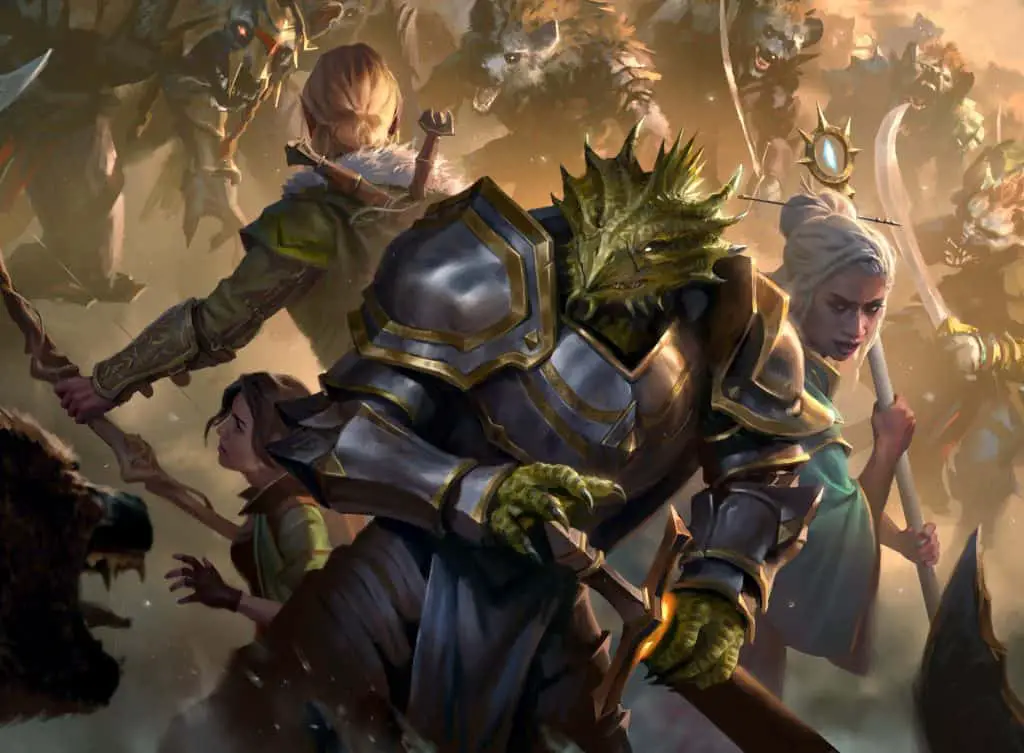
Change Up the Stakes
One of the best ways to keep combat interesting is to change up the stakes every now and then.
This could mean making it a race against the clock, upping the ante by introducing more powerful enemies, or anything else you can think of that adds an extra layer to the combat.
By changing up the stakes, you’ll keep the players invested in what’s happening and prevent them from getting bored. Just make sure not to go overboard and make things too difficult!
Bonus points if you’re introducing a tough choice!
A tough decision made out of combat gives the party time to strategize and pick the “best” option.
In combat, they have to make a “gut decision.” Forced to choose, do they apprehend the villain or save the friendly NPC dangling over the pool of lava?
Of course, the environment itself might even be a way to change the stakes of the combat encounter.
This is especially true if it’s in an unusual or unexpected location where there are now other factors to consider.
For example, instead of the standard forest clearing or caves, try setting an encounter in the middle of a city square or in a crowded marketplace.
This will force players to think on their feet and come up with new strategies on the fly.
Now they have innocent civilians to factor into their actions. If the party does start throwing huge AoE spells, there will certainly be collateral damage that they will have to answer for.
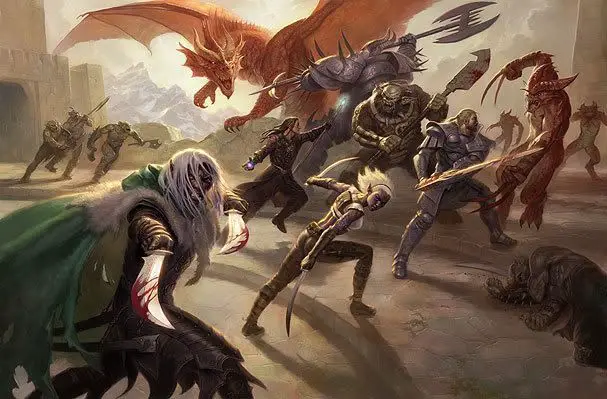
Use Description
So much of D&D is meant to engage with players’ imaginations within the “theatre of the mind.”
Adding descriptions of what is happening in combat can really help players feel like they are in the thick of things. Use vivid language to describe the surroundings and the action taking place.
The more immersive the experience, the more fun it will be for everyone involved.
Note that these don’t have to be long and drawn-out descriptions. Even something short and simple can paint a more engaging picture than “the attack misses” or “the attack hits and deals X damage.”
Go for the Goldilocks principle when describing things in combat. You don’t want descriptions so short that they don’t paint the image of what’s happening, but you don’t want them so long that combat comes to a stop while you ramble on.
For example, you might describe an enemy missing their attack with a scimitar like:
“The bandit swings their scimitar wildly through the air, narrowly missing your head as you duck out of the way.”
You might describe a successful spell attack against an enemy along the lines of:
“A bolt of crackling energy streaks towards the Medusa from your fingertips, crashing into their chest and causing them to stumble backward with a howl of pain.”
Both of these descriptions are short and to the point, but they give just enough information to help players visualize what’s happening. Get creative with it! The more engaging your descriptions, the more fun combat will be for everyone.
This is just a quick example, but you can see how adding even a small amount of description can make combat more engaging for everyone.
Related: The 6 Best Books That EVERY Dungeon Master Should Read
Use Music and Sound Effects
Having playlists of ambient music can be a huge help in bringing a situation to life and combat is no exception.
There are lots of great options out there, whether you want to use a ready-made playlist or put one together yourself! I’ve had great luck searching on Youtube and Spotify as well as using Tabletop Audio and Ambient Mixer.
And, of course, don’t hesitate to find some extra special music for when the party encounters bosses, key villains, or (especially) the BBEG!
Just be sure to keep it at a reasonable volume, though. You don’t want everyone having to yell over the sound of war drums and battle horns to take their action. That will have the opposite effect of what you’re going for!
Zooming in a little bit, this one is more of a personal preference, but I find that adding sound effects to combat can really help make it more interesting.
Just making quick sounds yourself like the crackle and boom of a fireball or the impact of steel as two combatants’ swords cross adds a nice flourish when creating an engaging description in combat.
It’s a small touch that has big effects.
After all, one of your key roles as DM is to paint as vivid a picture as possible in your players’ imaginations!
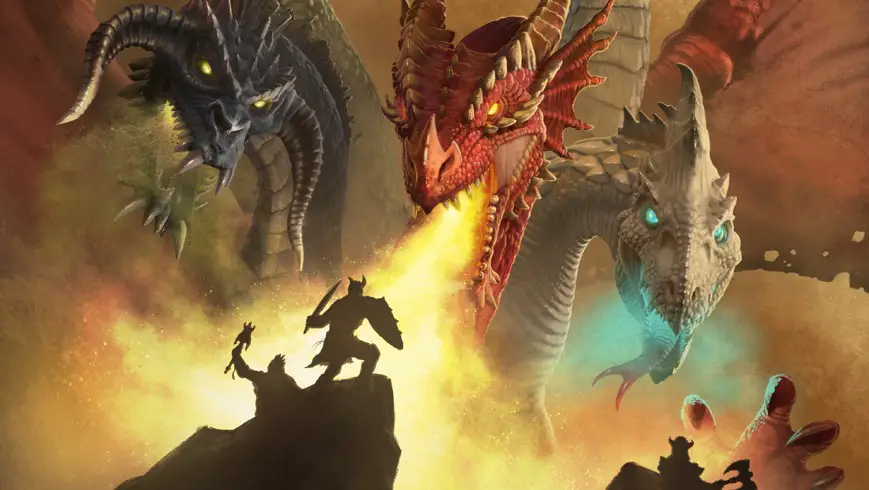
Keep Things Dynamic
Action requires movement, so why would you have enemies just run up and stay put?
By keeping things moving around, you’re making combat more dynamic. This will keep the players on their toes and make it more interesting to watch.
Additionally, it will also make it more challenging for them to fight effectively. Rather than just having to stand there while enemies line up in front of them, this forces the party to play tactically.
So, think about ways to move your enemies around during battle, whether it’s through magic or simple strategy.
How much is added both visually and mechanically by having an enemy jump behind the bar to take cover or try to escape out of a window when things seem to be going bad?
If a reasonably intelligent enemy can’t get through the Paladin’s AC to land a hit, why wouldn’t they disengage and try to change their position and/or go after an easier target?
Related: What Every Dungeon Master Can Learn From South Park
Throw Unexpected Curveballs
It’s almost inevitable that the party will fall into certain routines in combat.
That’s not a bad thing necessarily, but it can lead to players getting bored if they’re just doing the same thing over and over again.
So why not challenge the party’s routine approach to make them think outside the box?
By mixing things up and introducing new challenges, you can keep combat interesting and prevent your players from getting complacent.
So don’t be scared to throw unexpected curveballs at your players!
Somewhat branching off of earlier points, this could be anything from introducing a new enemy type that they’ve never faced before to using environmental hazards like wildfires or earthquakes.
But it could also mean having enemies call for reinforcements to really shake things up or introducing a different “win condition” to the encounter!
To this day, this is why one of my groups still talks about their first encounter with a fiery villain that we just call The Burning Man.
They were getting frustrated at how little their attacks seemed to do against him but got excited when the Tempest Cleric’s Gust of Wind spell (which he intended to just push The Burning Man back with) put out several of the lit torches in the room.
As The Burning Man yelled and the flames that made up his body shrank, they noticed that he wasn’t doing as much damage.
Focusing on putting out all nine torches in the room, they were then able to make quick work of the enemy that they were sure was about to wipe the entire party!
However you choose to throw curveballs at the party, just make sure it’s something that will really challenge your players and force them to think on their feet.
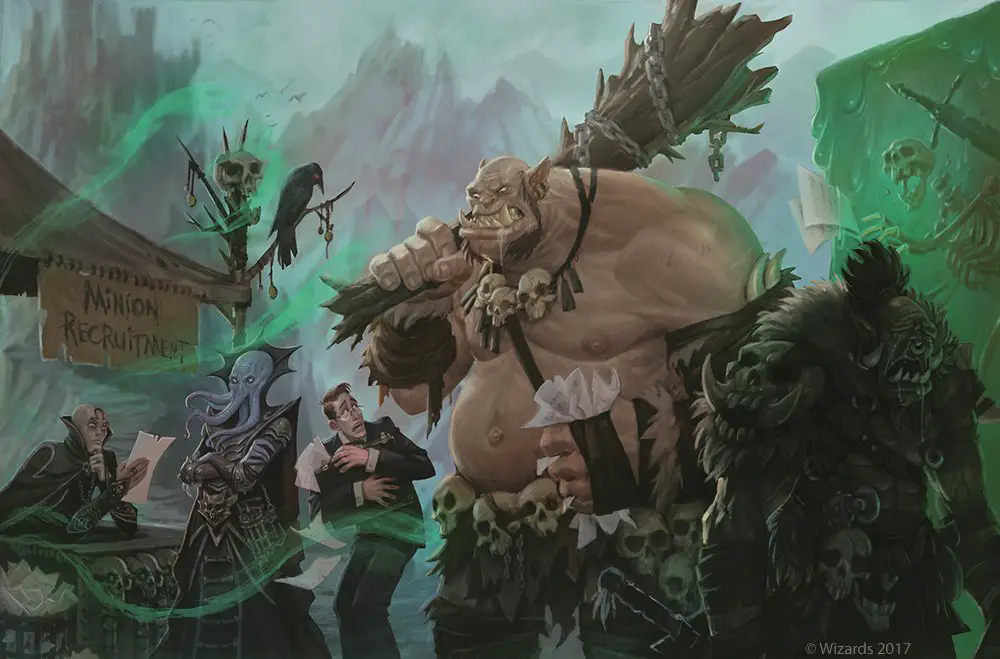
Make Use of Minions
Adding in tons of weak enemies for the party to mow through can be a great way to get the party hyped. That’s where minions come in!
These minions exist solely to provide numbers and serve as cannon fodder for the encounter. They typically have 1 hp, a low armor class, and deal small amounts of damage.
However, while they might not pose much of a threat individually, minions can be quite dangerous in large groups. The party will need to deal with them but shouldn’t have a difficult time doing so.
Plus, minions are a great way to add some extra flavor to combat encounters without overcomplicating things.
There is a rush to fighting your way through dozens, hundreds, or thousands of enemies. Hacking, slashing, and blasting your way through the enemy forces, you can ultimately get your showdown with the boss/commander.
Enemies like zombies, goblins, or miscellaneous humanoids (such as cultists or generic soldiers) tend to fit this role the best.
In my experience, minions work best once you’re in the mid-to-high tiers of play.
Related: The Tiers of Play in D&D 5e Explained
Keep Things Moving Quickly
Finally, we arrive at what might be one of the most important (but most effective) ways to keep combat interesting.
Simply put, you need to keep things moving quickly if you want to keep players engaged!
Don’t dilly-dally with overly long descriptions or extended periods of downtime (dialogue, “cutscenes”, etc) between turns. Instead, try to keep things moving along at a brisk pace.
This will help maintain the momentum of combat and prevent things from dragging on too long.
While it is true that the group is working together as a team and hopefully your players are actively supportive of each other, nobody will ever be as excited about a player’s turn as that player is. If it’s taking 15+ minutes between the player’s turns, they will very likely begin losing interest.
Don’t ignore the importance of descriptions and dynamic conditions, but keep it centered on the action and move briskly from turn to turn.
Conclusion – How To Keep Combat Engaging
Combat should be exciting!
By following these tips and injecting your own creativity, you can ensure that your encounters are as interesting and engaging as they are challenging.
Most importantly, have fun! If you’re enjoying yourself, chances are your players will be too.
So go out there and mix things up! Your players will thank you for it!
Got any tips of your own for making combat more engaging? Feel free to share them in the comments!
Don’t forget to sign up for the Tabletop Joab newsletter! It’s the best way to get all the latest player guides, DM Tips, news, reviews, and more for D&D 5e right to your inbox!
You can also follow me on Facebook and Twitter.
If you found this article helpful and want to support the site, you can buy me a coffee here! (It’s not expected, but very appreciated!)



